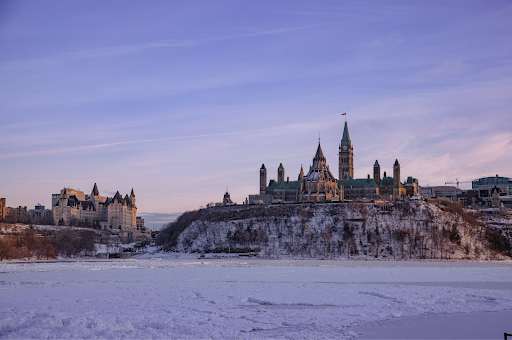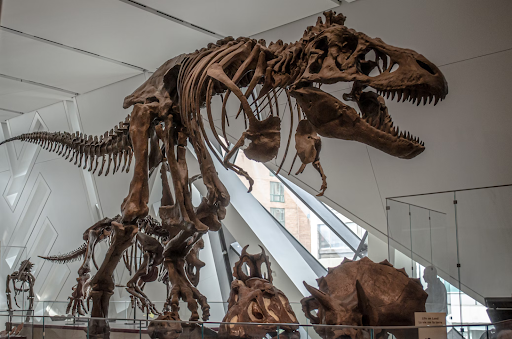Across Canada’s broad landscapes, a country celebrated for its majestic natural vistas, a mosaic of cultural heritages, and intricate historical narratives, an invitation stands to embark on a voyage back in time. Although the nation lacks high-speed trains to swiftly traverse its vast expanses from the craggy coastlines of the Atlantic to the tranquil shores of the Pacific, it boasts an array of history museums. These venerable institutions serve as the stewards of tales, relics, and the myriad cultures that have shaped Canada into the rich tapestry observed today. This exploration into Canada’s historical depths is profoundly augmented by the travel experience itself, leading adventurers across picturesque paths that unveil the stunning beauty of the land, offering an unparalleled perspective into the geographical and cultural strata that forge its essence.
This journey, especially the scenic rail route known as the train from Toronto to Vancouver, encapsulates the essence of Canada’s geographical and historical journey. As travelers embark on this rail adventure, they traverse a living tableau of Canada’s natural splendor and historical evolution. This route not only connects two of the country’s most vibrant cities but also threads through the heart of Canada’s narrative, making each kilometer a testament to the nation’s development from its indigenous roots through colonial times to its present-day status. The train journey itself becomes an integral part of the exploration, offering a unique, moving vantage point from which to witness the country’s vast beauty and complex history.
Royal Ontario Museum, Toronto
Starting in Toronto, the Royal Ontario Museum (ROM) stands as a beacon of world culture and natural history. The ROM is not just Canada’s largest museum of world cultures and natural history but also one of the most diverse museums in North America. Its extensive collections and galleries showcase everything from the age of dinosaurs to ancient Egypt, and from Canada’s First Peoples to contemporary art, offering visitors a comprehensive view of the world’s and Canada’s history.
Canadian Museum of History, Gatineau

Located merely a stone’s throw away from Ottawa, nestled across the river in Gatineau, Quebec, stands the Canadian Museum of History. This museum, the most frequented in the nation, commits itself to the exploration of Canada’s vast cultural legacy and the milestones of human accomplishments. Renowned for its remarkable architectural design and the Grand Hall, which provides captivating views of Parliament Hill, the museum invites visitors on an immersive journey through Canada’s historical landscape. Highlighting its exhibits is the First Peoples Hall, a tribute to the rich history, diverse cultures, inventive spirit, and enduring strength of the Indigenous peoples of Canada.
Halifax Citadel National Historic Site, Halifax
Moving inland to the nation’s capital, the Canadian War Museum in Ottawa offers an exhaustive narrative of Canada’s engagement in military endeavors, stretching from the formative years of New France to the modern era’s peacekeeping efforts. More than a mere recounting of battles and military engagements, the museum delves into the profound effects of warfare on the shaping of Canada and the vital roles played by Canadians both on the front lines and the home front. The building itself, a symbol of renewal and hope, along with the Memorial Hall which houses the headstone of Canada’s Unknown Soldier, stands as a somber testament to the sacrifices endured in the quest for peace.
Canadian War Museum, Ottawa
In the heart of Ottawa lies the Canadian War Museum, a sanctuary dedicated to narrating the extensive military saga of Canada, tracing its origins from the formative years of New France through to the modern endeavors in peacekeeping. The museum casts a wide net, capturing not merely the tales of warfare and conflict but also delving into the profound influence these events have had on the nation’s evolution and the vital roles played by Canadians both within the homeland and on foreign soils. Architecturally crafted to symbolize themes of rebirth and optimism, the museum also hosts the Memorial Hall, home to the headstone of Canada’s Unknown Soldier, serving as a solemn tribute to the sacrifices pursued in the name of peace.
Pier 21, Halifax
Far to the east in Halifax, Nova Scotia, Pier 21 stands as a beacon of hope and new beginnings, often referred to as Canada’s version of Ellis Island. From 1928 to 1971, this historic gateway welcomed over one million immigrants to Canadian shores, acting as the threshold to a new life for countless individuals and families. Presently, it is the site of the Canadian Museum of Immigration, which offers a poignant journey through the personal stories, challenges, and aspirations of those who walked its halls. With its engaging interactive displays and compelling personal accounts, the museum paints a rich tapestry of Canada’s immigration narrative, celebrating the myriad of cultures and individuals that have woven themselves into the fabric of Canadian society.
Conclusion
Exploring Canada through its history museums not only enriches one’s understanding of the nation’s heritage but also fosters an appreciation for its extensive and diverse terrains. Although the country lacks a network of rapid rail services to transport travelers swiftly from one coast to the other, the journey itself unfolds as a voyage through history, revealing the evolving landscapes from Ontario’s dense woodlands, across the expansive prairies, over the majestic Rocky Mountains, and along British Columbia’s rugged coastline. Each museum encountered on this path acts as a narrative segment of Canada’s story, beckoning visitors to immerse themselves in the tales of the people, events, and locations that have shaped the country.
